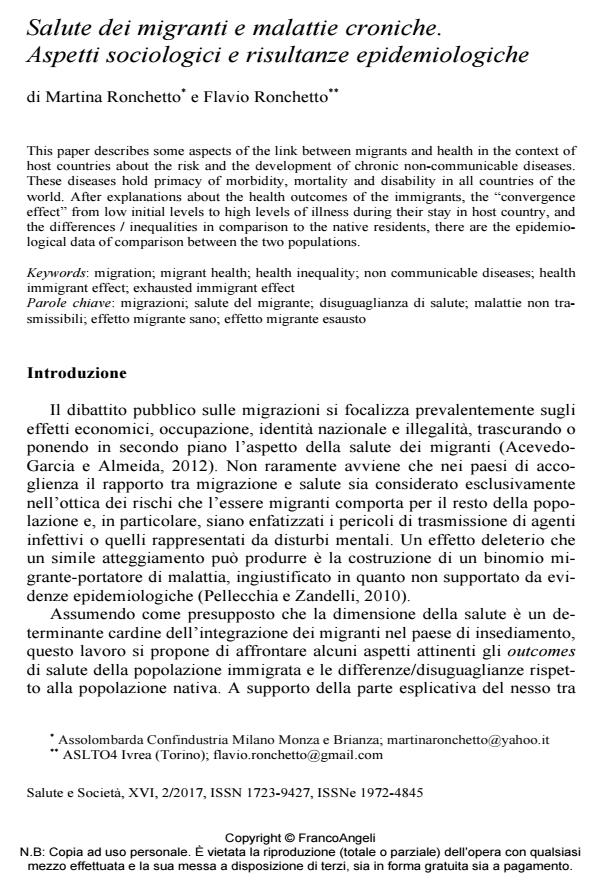Salute dei migranti e malattie croniche. Aspetti sociologici e risultanze epidemiologiche
Journal title SALUTE E SOCIETÀ
Author/s Martina Ronchetto, Flavio Ronchetto
Publishing Year 2017 Issue 2017/2
Language Italian Pages 15 P. 149-163 File size 102 KB
DOI 10.3280/SES2017-002011
DOI is like a bar code for intellectual property: to have more infomation
click here
Below, you can see the article first page
If you want to buy this article in PDF format, you can do it, following the instructions to buy download credits

FrancoAngeli is member of Publishers International Linking Association, Inc (PILA), a not-for-profit association which run the CrossRef service enabling links to and from online scholarly content.
This paper describes some aspects of the link between migrants and health in the context of host countries about the risk and the development of chronic non-communicable diseases. These diseases hold primacy of morbidity, mortality and disability in all countries of the world. After explanations about the health outcomes of the immigrants, the "convergence effect" from low initial levels to high levels of illness during their stay in host country, and the differences / inequalities in comparison to the native residents, there are the epidemiological data of comparison between the two populations.
Keywords: Migration; migrant health; health inequality; non communicable diseases; health immigrant effect; exhausted immigrant effect
Martina Ronchetto, Flavio Ronchetto, Salute dei migranti e malattie croniche. Aspetti sociologici e risultanze epidemiologiche in "SALUTE E SOCIETÀ" 2/2017, pp 149-163, DOI: 10.3280/SES2017-002011